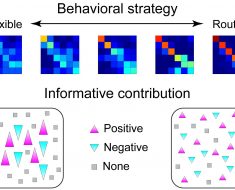
THURSDAY, Dec. 27, 2018 — A new quantitative personalized tool can better predict asthma development in young children than the Asthma Predictive Index (API), according to a study published online Dec. 13 in The Journal of Allergy and Clinical Immunology.
Jocelyn M. Biagini Myers, Ph.D., from the Cincinnati Children’s Hospital Medical Center, and colleagues used data from 762 individuals in the Cincinnati Childhood Allergy and Air Pollution Study birth cohort to identify factors that predicted asthma development. They integrated demographic and clinical data to construct the Pediatric Asthma Risk Score (PARS).
The researchers found that the sensitivity and specificity of PARS were 0.68 and 0.77, respectively, in the Cincinnati Childhood Allergy and Air Pollution Study. The PARS and API both predicted asthma in high-risk children; the ability to predict asthma in children with mild-to-moderate risk was improved with PARS. Variables that predicted asthma in the PARS included early wheezing, sensitization to two or more food allergens and/or aeroallergens, and African-American race (odds ratios, 2.88, 2.44, and 2.04, respectively), as well as parental asthma, eczema, and wheezing apart from colds. In the Isle of Wight cohort, the PARS was replicated, with sensitivity and specificity of 0.67 and 0.79, respectively.
“Our PARS model either outperforms and/or is less invasive than 30 existing models intended to predict asthma development,” a coauthor said in a statement. “The PARS also may be more clinically useful and applicable in an office setting.”
Abstract/Full Text (subscription or payment may be required)

Posted: December 2018
Source: Read Full Article





